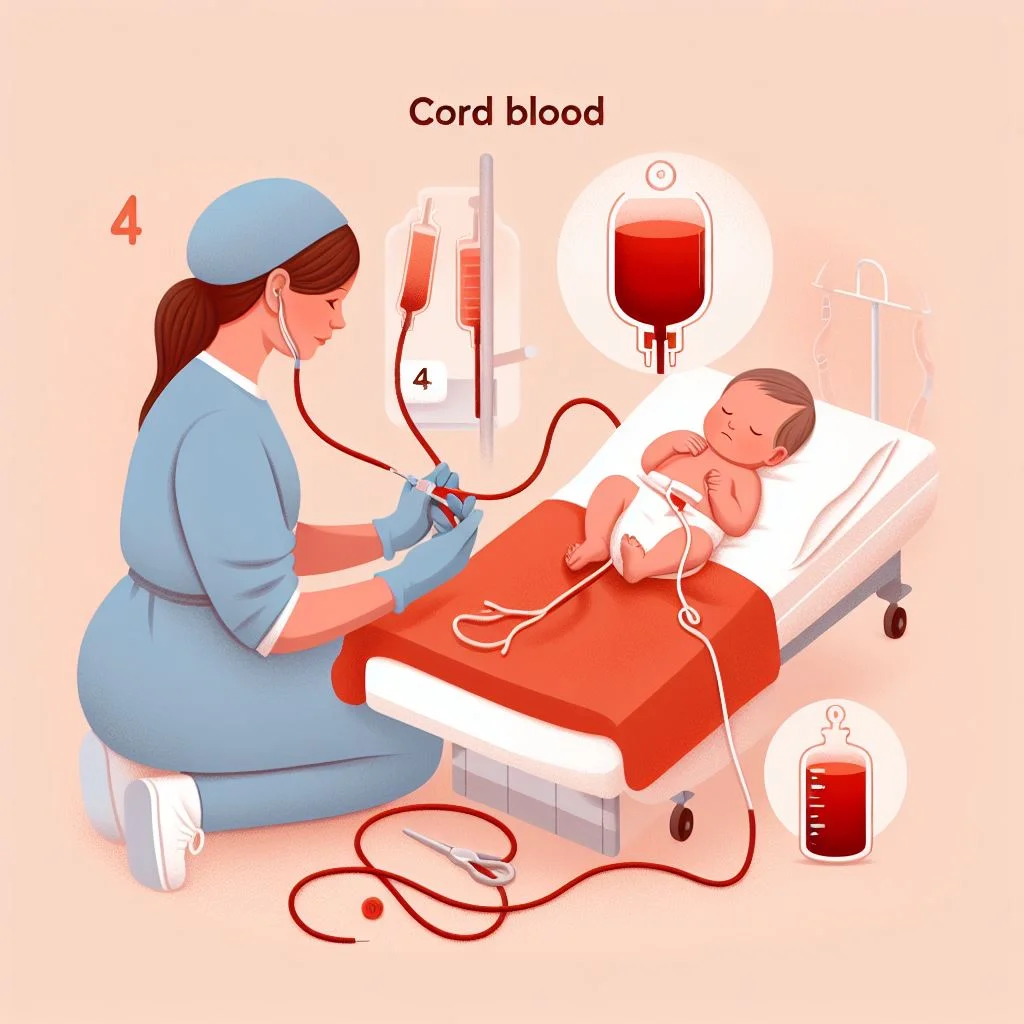How is Cord Blood Obtained?
Obtaining Cord Blood: Cord Blood is a rich source of stem cells as Bone Marrow, but it is very easy to attain as compared to bone marrow. The collection process is comparatively easy and painless and does not interfere with the delivery or subsequent care for your newborn and yourself.
Immediately after delivery of the baby, the umbilical cord is clamped and the baby is separated from the cord. Your obstetrician or midwife cleans a 4-to 8-inch area of umbilical cord with antiseptic solution and inserts the blood bag needle into one of the three veins in the umbilical cord. The blood flows into the bag by gravity, until it stops, after which the collection is complete.
The blood bag is clamped, sealed and labeled. The collection typically takes 2 to 5 minutes. Three tubes of maternal blood are also drawn. After a successful collection about 75 to 90 ml (less than 1/2 a cup) of cord blood is collected. This quantity is about 10 times less than is generally used for a bone marrow transplant.

Obtaining Cord Blood
The bag comes equipped with an anti-coagulant to keep the blood from clotting before it reaches to the concerned laboratory. The process is non-invasive, painless, and unlike traditional bone marrow collection which usually requires a general anesthesia and recovery, usually takes between 3 and 5 minutes to complete. In many cases patients are supplied with a cord blood collection kit prior to delivery date (to bring along with them) to the hospital for the physician or midwife to collect the cord blood after delivery.
When the placenta is expelled, more blood will be collected from the veins in the placenta. After the placenta is out of the womb. The cord blood collection perhaps not be successful because the volume collected is insufficient or there is a clot. If unsuccessful, there will be no need to collect blood from you or take a medical history.
The minimum requirement of cord blood sample is 100g. The main goal when collecting cord blood is to collect the maximum number of hematopoietic progenitor cells possible (while in no way disrupting the normal activities of the obstetrician or midwife in the peripartum period). The number of stem cells is important to the success of the transplant. The transplant recipient’s time to neutrophil recovery is strongly correlated with the dose of cryo-preserved nucleated cells, CFU-GM and the dose of thawed CD34+ cells.
On average, about 3 to 6 fluid ounces are collected from the umbilical cord. If the amount is too small, there will not be enough stem cells to be used for transplantation and the cord blood unit (CBU) will not be stored. CBUs that do not meet the criteria for transplant may be used by researchers in the search for new and more effective medical uses for cord blood stem cells.
Cord blood possible collected from the placenta either while the placenta is still in utero after the cord is clamped and cut and the baby is removed from the area, or ex-utero, which is the term used after the placenta has been delivered.. Most in utero collections occur in a closed system using blood collection bags to minimize the risk of contamination.
Ex-utero cord blood collections (Obtaining Cord Blood) involve removing the placenta from the delivery room and collecting the cord blood after it has been delivered. To collect the blood, the surface of the umbilical cord is disinfected and the umbilical vein is punctured. The blood can be collected by gravity drainage into a prepared blood bag or it can be drawn into a 60 cc syringe containing an anticoagulant. The collection can be completed within 3-5 minutes. A delay of more than 10-15 minutes could result in a decreased volume of cord blood and a decreased number of hematopoietic cells.
Obtaining Cord Blood Video
